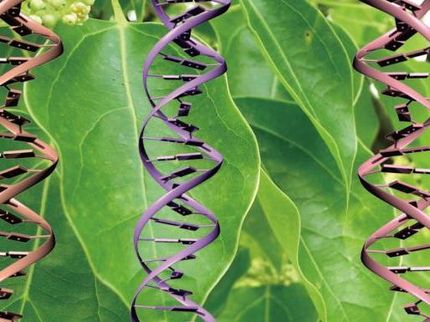A new model can predict the evolution of antibiotic resistance in bacteria
An international research team has developed a model that predicts growth rates and resistance mechanisms of common bacterial mutants at different drug doses
A team of scientists from the University of Cologne (Germany) and the University of Uppsala (Sweden) has created a model that can describe and predict the evolution of antibiotic resistance in bacteria. Resistance to antibiotics evolves through a variety of mechanisms. A central and still unresolved question is how resistance evolution affects cell growth at different drug concentrations. The new model predicts growth rates and resistance levels of common resistant bacterial mutants at different drug doses. These predictions are confirmed by empirical growth inhibition curves and genomic data from Escherichia coli populations.
Antibiotic resistance arises through evolution. Bacteria change their genome and become less sensitive to drugs. Resistance mutations, however, often come at a cost to bacteria in the absence of antibiotics. The mutant cells have higher growth in the presence of the drug, but in a drug-free environment, their growth rate is lower than that of the antibiotic-susceptible wild type. ‘The cells have to optimize their decision about resistance. We have created a model that describes this process,’ said main author Fernanda Pinheiro from the Institute of Biological Physics at the University of Cologne.
The process can be compared to building and marketing houses, she explained: ‘Houses are built with a fixed budget. Depending on the location, you have to invest more or less to insulate against cold and, in return, make compromises in design. But an ugly house also sells poorly. Similarly, the evolution of bacteria determines how much of its protein content is invested in antibiotic resistance.’
This prediction is very difficult because the bacterium often has multiple options to build defences. ‘Surprisingly, our model successfully predicts which mechanisms of antibiotic resistance are likely to evolve in a bacterial population under certain conditions,’ Pinheiro said. In keeping with the analogy of building a house: To keep the house warm, one can invest in thick windows or in heating technology. Which option is better depends on the whole system, because in a bacterium, different parts of the cell are interdependent. ‘Mutations change these parts and leave traces in the growth pattern that, in turn, can be used to learn and ultimately predict evolution.’
Resistant bacteria threaten the antibiotic treatment of millions of people worldwide and cause hundreds of thousands of deaths each year. In 2019, the WHO included antibiotic resistance in its list of the top 10 threats to global health. Therefore, insights about the evolution of antibiotic resistance can help identify optimal treatment protocols, drug targets, and new antibiotic candidates. The new knowledge can be useful in making better decisions about antibiotic use. ‘If we can anticipate what bacteria are likely to do under different circumstances, we can think more specifically about interventions to avoid the evolution of resistance,’ Pinheiro said.
Original publication
Other news from the department science

Get the analytics and lab tech industry in your inbox
By submitting this form you agree that LUMITOS AG will send you the newsletter(s) selected above by email. Your data will not be passed on to third parties. Your data will be stored and processed in accordance with our data protection regulations. LUMITOS may contact you by email for the purpose of advertising or market and opinion surveys. You can revoke your consent at any time without giving reasons to LUMITOS AG, Ernst-Augustin-Str. 2, 12489 Berlin, Germany or by e-mail at revoke@lumitos.com with effect for the future. In addition, each email contains a link to unsubscribe from the corresponding newsletter.


















































